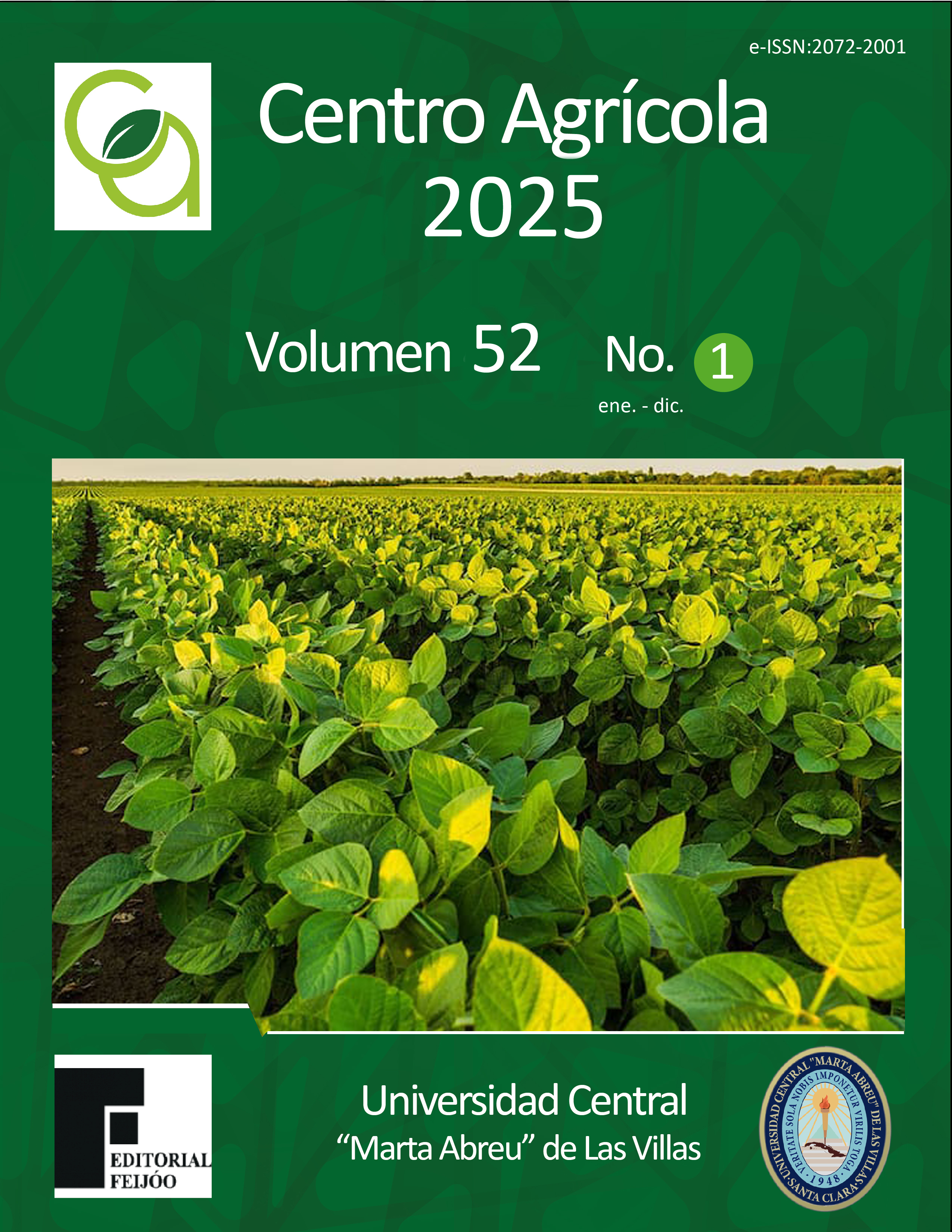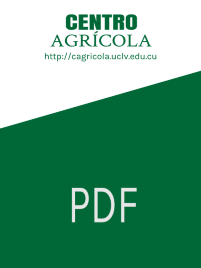CF: cag041252452
ARTÍCULO DE INVESTIGACIÓN
Efecto de tratamientos simples y combinados en la calidad y conservación del aguacate ʻJulio̕
Effect of single and combined treatments on the quality and preservation of ‘Julio’ avocados
Tania Mulkay Vitón*
Adrián Paumier Jiménez
Mayda Betancourt Grandal
Vida E. Peña Quintana
Instituto de Investigaciones en Fruticultura Tropical, Ave. 7ma, # 3005 e/ 30 y 32, Miramar, Playa 11300, La Habana, Cuba
*Correspondencia: Esta dirección de correo electrónico está protegida contra spambots. Usted necesita tener Javascript activado para poder verla.
RESUMEN
Contexto: Los aguacates son altamente perecederos lo que limita su comercialización hacia mercados distantes. Por tal motivo, la integración de los tratamientos durante el manejo poscosecha contribuye a alargar la vida útil de esta fruta.
Objetivo: Evaluar el efecto de tratamientos simples y combinados en la calidad y conservación del cultivar ʻJulio̕´.
Métodos: Las frutas recolectadas con madurez fisiológica se seleccionaron y sometieron a los siguientes tratamientos: 1) Limpieza con paño húmedo (control), 2) Desinfección con hipoclorito de sodio 100 mg L-1 por inmersión durante 5 min, 3) Encerado con aspersión de cera polietileno, y 4) Combinación de los tratamientos 2 y 3. Posteriormente, se conservaron a temperatura de 12 ± 1 °C durante 14 días. Se determinaron la pérdida de masa fresca, índice de color del exocarpio y mesocarpio, firmeza del mesocarpio, materia seca, tasa de respiración e incidencia por enfermedades.
Resultados: El tratamiento 3 y la combinación del 2 y 3 mostraron menores porcentajes de pérdidas de masa fresca y materia seca, mayor firmeza del mesocarpio y menor tasa de respiración con diferencias estadísticas con el control y el tratamiento 2. El índice de color del exocarpio y mesocarpio no difirió entre todos los tratamientos. La incidencia de enfermedades fue significativamente inferior con la combinación de los tratamientos 2 y 3.
Conclusiones: Las frutas recubiertas con cera y su combinación con hipoclorito de sodio, y almacenadas a 12 ± 1 °C tienen una vida útil de 14 días y mantienen calidad para el consumo fresco. Por consiguiente, es un proceso efectivo para la conservación del aguacate.
ABSTRACT
Context: Avocados are highly perishable, which limits their commercialization to distant markets. Therefore, integrating treatments during postharvest handling contributes to extending the shelf life of this fruit.
Objective: To evaluate the effect of single and combined treatments on the quality and preservation of cultivar ‘Julio’.
Methods: Fruits harvested at physiological maturity were selected and subjected to the following treatments: 1) cleaning with a damp cloth (control); 2) disinfection with sodium hypochlorite 100 mg L-1 by immersion for 5 min; 3) waxing with polyethylene wax spray; and 4) combination of treatments 2 and 3. Subsequently, they were stored at a temperature of 12 ± 1 °C for 14 days. Loss of fresh mass, exocarp and mesocarp color index, mesocarp firmness, dry matter, respiration rate, and disease incidence were determined.
Results: Treatment 3 and the combination of treatments 2 and 3 showed lower percentages of fresh mass and dry matter losses, greater mesocarp firmness, and a lower respiration rate, statistically different from the control and treatment 2. The exocarp and mesocarp color index did not differ among all treatments. The incidence of disease was significantly lower with the combination of treatments 2 and 3.
Conclusions: Fruits coated with wax and its combination with sodium hypochlorite, and stored at 12 ± 1 °C, had a shelf life of 14 days and maintained quality for fresh consumption. Therefore, it is an effective process for avocado preservation.



